
Kokomo is a city in and the county seat of Howard County, Indiana, United States. Its population was 59,604 at the 2020 census. It is the principal city of the Kokomo metropolitan area, which includes all of Howard County, and it is the largest city and regional center for the North Central Indiana region consisting of ~225,000 people across six counties anchored by the city of Kokomo. The city is located approximately 60 miles (97 km) north of Indianapolis and 85 miles (137 km) south of South Bend, Indiana.

Inman Park is an intown neighborhood on the east side of Atlanta, Georgia, and its first planned suburb. It was named for Samuel M. Inman.
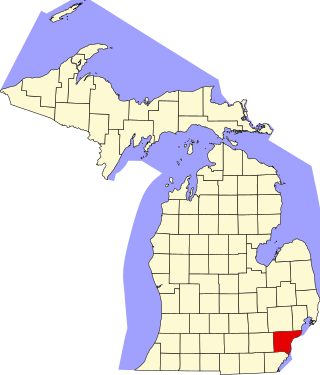
This is a list of the National Register of Historic Places listings in Wayne County, Michigan.
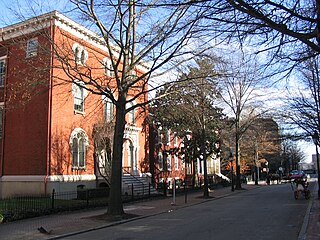
Court End is a neighborhood in Richmond, Virginia, that sits to the north of the Capitol Square and East Broad Street. It developed in the Federal era, after Virginia's capital moved from Williamsburg.

The Sycamore Historic District is a meandering area encompassing 99 acres (400,000 m2) of the land in and around the downtown of the DeKalb County, Illinois county seat, Sycamore. The area includes historic buildings and a number of historical and Victorian homes. Some significant structures are among those located within the Historic District including the DeKalb County Courthouse and the Sycamore Public Library. The district has been listed on the National Register of Historic Places since May 2, 1978.

St. Mark's Episcopal Church is an historic Episcopal church located at 6-8 Highland Street in Ashland, New Hampshire, in the United States. Organized in 1855, it is part of the Episcopal Diocese of New Hampshire. Its building, completed in 1859, was designed by New York City architect J. Coleman Hart, and is one of the region's most distinctive churches, having a Gothic Revival design built out of half-timbered brick. On December 13, 1984, the church building was added to the National Register of Historic Places. The current pastor is Rev. Tobias Nyatsambo.

This is a list of the National Register of Historic Places listings in Detroit, Michigan.
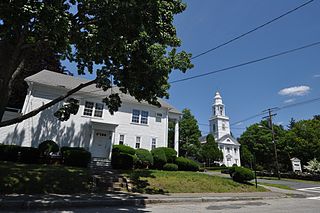
Church Street Historic District is a historic district roughly on Church Street between Park Ave. and Highland St. in Ware, Massachusetts. This mainly residential area includes some of Ware's finest late 19th century houses and a well-preserved collection of Greek Revival houses. The area was developed primarily in response to the growth of industry to the south. The district was listed on the National Register of Historic Places in 1983.

Sycamore Street is both a street and a historic neighborhood located in the Atlanta, Georgia suburb of Decatur. The street is known for its homes, which are some of the largest historic homes in Decatur. It is also "book-ended” by MARTA stations, and the MARTA track runs underneath the western end of Sycamore Street. The neighborhood includes historic homes, historic churches, townhouses and adaptive reuse condominiums.
The Hudson Highlands Multiple Resource Area is a Multiple Property Submission study supporting multiple listings in 1982 to the United States National Register of Historic Places. It originally included 58 properties spread over the counties of Dutchess, Putnam, Westchester, Orange and Rockland.

There are 77 properties listed on the National Register of Historic Places in Albany, New York, United States. Six are additionally designated as National Historic Landmarks (NHLs), the most of any city in the state after New York City. Another 14 are historic districts, for which 20 of the listings are also contributing properties. Two properties, both buildings, that had been listed in the past but have since been demolished have been delisted; one building that is also no longer extant remains listed.
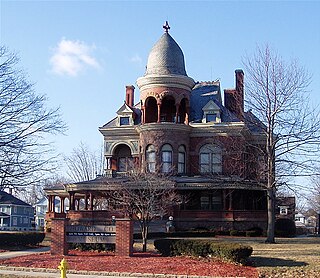
The Seiberling Mansion is a historic house located at Kokomo, Indiana, United States. In 1887, Monroe Seiberling of Akron, Ohio, traveled to Kokomo to open the Kokomo Strawboard Company, which would make shoe boxes out of straw and employ seventy-five people. Within six months, Seiberling, uncle of Goodyear Tire and Rubber Company founder Frank Seiberling, sold the Kokomo Strawboard Company and opened the Diamond Plate Glass Company. He began construction on his mansion in October 1889 at a cost of $50,000, with construction ending within two years. The mansion is built in a mixture of Queen Anne and Romanesque Revival styles.
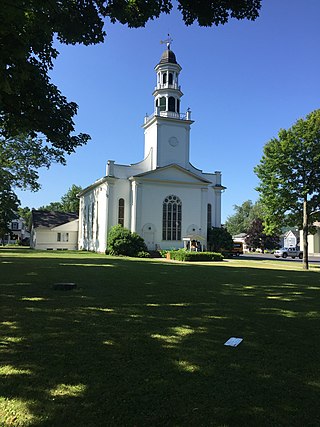
Church Street–Congress Street Historic District is a national historic district located in the village of Moravia in Cayuga County, New York. The district contains 122 contributing buildings and one contributing structure. It is primarily a residential district and preserves several intact examples from the village's earliest period of development, 1810–1830. Numerous residential structures date to the 1830–1840 period and are in the Greek Revival style. This includes the Federal style Congregational Church (1823). Other churches located in the district are the Romanesque style Baptist Church (1874) and the Gothic Revival St. Matthew's Episcopal Church (1897–1898). The district also includes the Powers Library (1880) building and Moravia High School (1924).

Grace Church or Grace Episcopal Church is a historic Episcopal church located at 600 Cleveland Avenue in Plainfield, Union County, New Jersey, United States. It was added to the National Register of Historic Places on May 10, 2002, for its significance in architecture, art, and music from 1892 to 1930.

The architectural firm of Kiehnel and Elliott was established in Pittsburgh, Pennsylvania, in 1906. The firm did substantial work in Florida, and moved to Miami in 1922. From 1926, it was known as Kiehnel, Elliott and Chalfant.
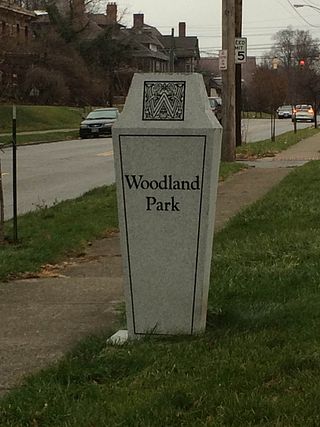
Woodland Park is a residential neighborhood located in the Near East Side of Columbus, Ohio that houses approximately 1,500 residents. The neighborhood was previously home to such figures as artist Emerson Burkhart, cartoonist Billy Ireland, and judge William Brooks. Established in the early 20th century, Woodland Park has grown from its planned neighborhood roots into a neighborhood that contains various faith communities, schools, sources of entertainment and recreation, and borders an extension of the Ohio State University medical center.

Centennial Neighborhood District is a national historic district located at Lafayette, Tippecanoe County, Indiana, United States. The area originated as the Bartholomew and Davis Additions to Lafayette in 1829. Growth came rapidly after the Wabash and Erie Canal arrived in 1843, and continued with the arrival of the railroad in 1853. The Centennial Neighborhood Historic District takes its name from the Centennial School, which was constructed in 1876 on the centennial of the nation. The school was located on the northeast corner of Brown Street at North 6th Street. It has since been removed and a park was created at its original location.

St. Mary Historic District is a national historic district located at Lafayette, Tippecanoe County, Indiana. In 1864, St. Mary's Catholic Church relocated from its original site at Fifth and Brown Streets to Columbia Street. With the move, many of the congregation also moved to this area. The Church became both a religious and social center for the neighborhood. Many of the homes date from the 1860s and 1870s and include fine examples of the Italianate, Greek Revival and Queen Anne styles as well as vernacular house types. Most of the people who built in this area were Lafayette businessmen. At 1202 Columbia Street James Ball, a local wholesale grocer left his name stamped into the front steps. Across the street is the James H. Ward House, who along with his brother, William, owned a local carpet and wallpaper business.
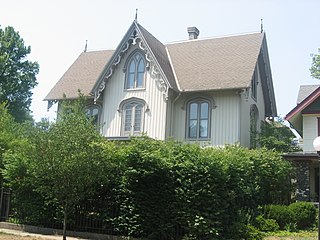
The Horatio Chapin House, or simply, the Chapin House, is a historic home located at South Bend, St. Joseph County, Indiana. It was built between 1855 and 1857 by Horatio Chapin, one of the early settlers of South Bend and the first president of the board of town trustees. The house consists of a 2+1⁄2-story, cross-plan, Gothic Revival style frame dwelling, a rare example of its kind in the region. It's considered an outstanding example of Gothic Revival architecture influenced by architect Andrew Jackson Downing. It is sheathed in board and batten siding and features lancet windows and a steeply pitched cross-gable roof with an elaborately carved bargeboard. The Chapin House is widely recognized as one of the most significant homes in the state of Indiana, and in 1980 it was listed on the National Register of Historic Places.





























